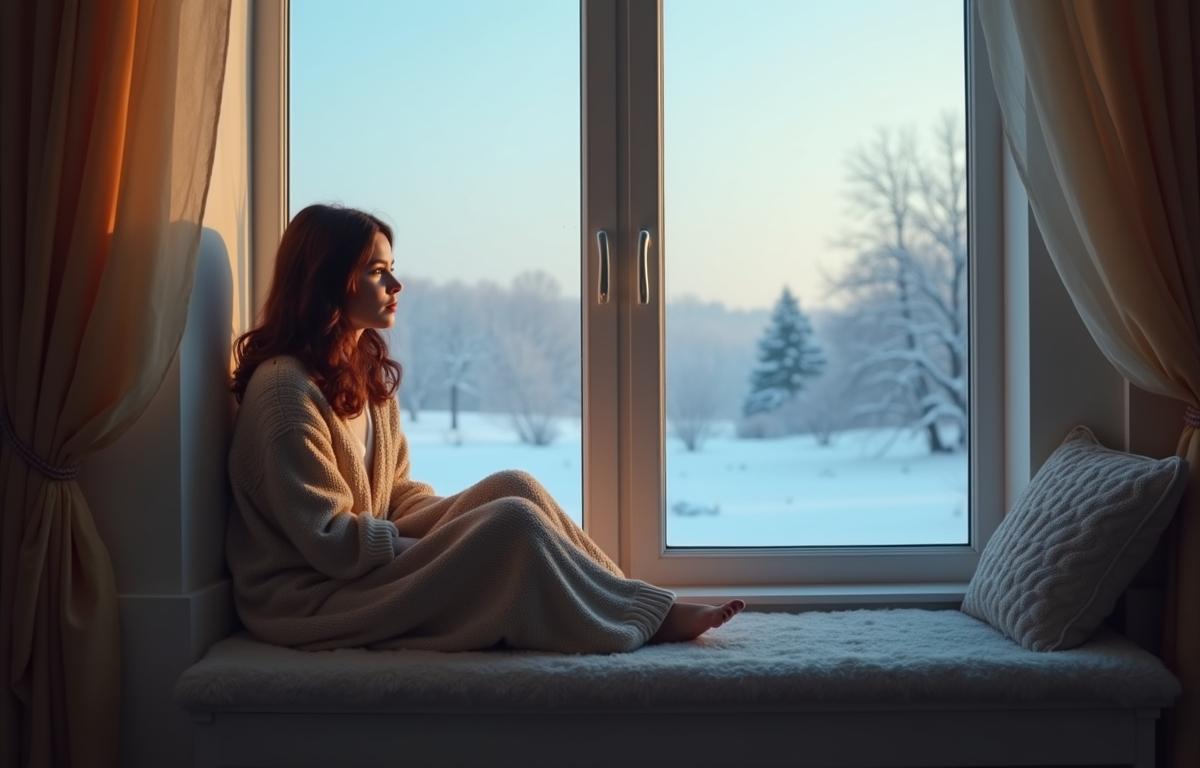As days get colder and darker, struggle with seasonal affective disorder may arise. That shift in daylight can create a ripple effect through your emotional health, influencing everything from energy levels to sleep patterns. When nights grow longer, many people encounter fatigue, anxiety, and the dreaded winter blues that make it difficult to find joy in daily responsibilities.
As temperatures drop, it’s natural to crave warmth and a sense of comfort. Yet this pull toward hibernation can lead to social withdrawal or mood swings that affect your overall mental health. No one likes to feel stuck in cold weather depression, so exploring the root of these struggles and discovering practical ways to handle them can make a meaningful difference.
Contents
Spotting Seasonal Depression
One key indicator of seasonal mood changes is persistent low energy even after a good night’s sleep. You might notice yourself sleeping more or battling daytime drowsiness, which can stem from shifts in your biological clock or melatonin production. These changes can trigger depression that, for some individuals, manifests primarily when there’s less sunlight exposure.
Symptoms can creep up slowly. SAD symptoms might start with slight irritability or an unexplainable sense of heaviness. Over time, these feelings can deepen into stronger depressive episodes, leading to difficulties focusing and an unrelenting sense of worthlessness. Maintaining awareness of these symptoms empowers you to seek out early treatment options.
The Role of Serotonin Levels
When sunlight grows scarce, your body’s serotonin levels can dip. This neurotransmitter plays a key part in regulating mood, so lower amounts can trigger more marked symptoms. With a drop in serotonin, you might also experience cravings for sweet or carb-heavy snacks, which briefly boost your mood but contribute to later crashes. Recognizing these shifts in cravings and emotional well-being can help you spot when you’re spiraling into seasonal depression.
Addressing Cold Weather Depression with Self-Care for SAD
Staying proactive about your emotional health during colder months can alleviate the sting of winter blues. Self-care for SAD can be as simple as taking moments to check in with yourself. Reflect on your fatigue levels, mood swings, anxiety, and any new symptoms that seem tied to daylight shifts. By doing so, you’ll become more mindful of changes in your circadian rhythm and be better equipped to respond.
Another crucial aspect involves staying socially connected. Even brief outings with family or friends can combat feelings of isolation. While retreating inside can be tempting, consistent social engagement helps maintain emotional well-being. It’s understandable to prefer cozy nights in, but finding the right balance between solace and support groups for SAD can be very beneficial.
Incorporating Movement
Physical activity escalates endorphins, which counteract some of the gloom associated with mood disorders. Even low-intensity walks during midday, when sunlight exposure is strongest, can elevate your energy levels. If venturing out isn’t practical, a quick home workout or gentle yoga session can still boost your overall mood. Keeping your body active helps tamper down the weight of seasonal depression.
Harnessing Light Therapy and Sunlight Exposure
Light therapy, also called phototherapy, is a staple SAD treatment option. It involves the use of special light boxes in the morning to mimic natural sunlight, which helps stabilize your biological clock. By using these devices daily, many people notice improvements in fatigue, anxiety, and overall mental health within a couple of weeks. Consistency is key: aim to use the light box around the same time each day to regulate your circadian rhythm.
Sunlight therapy doesn’t always require elaborate equipment. If the day isn’t too overwhelming, step outdoors for a quick fix of natural sunlight exposure whenever you can. Regularly letting real sunlight grace your skin can improve vitamin D deficiency, which contributes to the severity of cold weather depression. Consider even small adjustments, like placing desks near windows or opening curtains to let in more natural light. These minor changes can have a subtle yet significant effect on your mood swings.
Managing Melatonin Production
When darkness falls earlier, your body might ramp up melatonin production sooner than usual. While melatonin helps regulate sleep patterns, too much can sap your energy and make you feel groggy during the day. Light therapy and increased sunlight exposure can help re-align this hormone, making you more alert when you want to be and sleepy when it’s time for bed.
Exploring Additional SAD Treatment Options
Everyone’s situation is different, so it’s best to explore multiple avenues for addressing seasonal depression. Psychotherapy remains a reliable approach, as simply talking with a trained professional can help break down the mental barriers that keep you in the dark. Cognitive behavioral therapy is particularly useful for challenging negative thought cycles and developing coping techniques for the winter blues. Therapy also creates space for psychoeducation, where you learn to identify triggers and reframe your responses.
Medication can also be part of a well-rounded plan. Some individuals benefit from antidepressants that target imbalances in serotonin levels. Your doctor may suggest them for a short period, focusing on the months you experience recurrent seasonal changes. Combining medication with light therapy and consistent self-care can ease the transition into colder seasons.
The Significance of Vitamin D
Vitamin D deficiency may worsen SAD symptoms because this nutrient is vital for bone health, immune support, and mood regulation. Shorter days often mean we spend more time indoors, depriving our bodies of the sunlight that helps produce vitamin D. Speak with a healthcare provider about checking your levels and consider supplementation if necessary. Ensuring you meet your vitamin D needs can improve not only your emotional well-being but also your physical health throughout the winter.
Balancing Lifestyle and Emotional Needs
Lifestyle adjustments can have a powerful impact on managing seasonal changes. Simple strategies, like sticking to consistent sleep patterns or carving out a bit of time for sunlight exposure each morning, can keep your biological clock well-regulated. Pay attention to what you eat, too. Nutrition plays a larger role than most people realize, and a balanced diet can help stabilize both energy levels and mood swings.
Making Time for Relaxation
A steady wind-down routine at night is often overlooked yet immensely beneficial. Turn off electronic devices, maybe experiment with guided meditation or gentle music to calm your mind. Giving yourself these moments reduces the mental clutter that can fuel depression and anxiety during the darker months. Activities that relax the body also work wonders for your emotional health, easing tensions that have built throughout the day.
Building Your Support Network
Having a reliable community or group of friends is an invaluable resource. Cold weather depression often thrives in isolation, so communicating openly with loved ones can provide vital encouragement. If you’re facing persistent sadness, there’s no shame in sharing what you’re going through. Whether it’s a phone call, a video chat, or a walk outside together, staying connected fosters a sense of belonging that mitigates some of the toughest aspects of seasonal changes.
Support groups for SAD give you a chance to relate to people who truly understand. These groups might meet in person at community centers or exist online, where you can interact from the comfort of home. Hearing how others cope with the same mood disorders creates comfort and offers practical ideas about navigating limited daylight. Mutual support can be one of the most healing aspects of any treatment plan, especially during the long winter months.
Rethinking Social Commitments
While maintaining social ties helps you ward off mood swings, sometimes it’s necessary to set boundaries. Overcommitting to events or gatherings might invite more stress than relief, especially if you’re already grappling with depression. It’s about finding that sweet spot between meaningful connections and allowing yourself downtime. Let those around you know that you want to participate and be there for them, but that you also need recharge time to protect your mental health.
Fostering Long-Term Emotional Well-Being
Establishing year-round routines can lessen the impact of seasonal affective disorder once winter rolls around again. For instance, you could maintain regular exercise, practice mindfulness, or schedule consistent check-ins with a mental health professional. Lining up an action plan well before the cold season helps anchor you in healthy habits. It’s easier to face seasonal mood changes with the right groundwork in place.
Refining your relationship with technology can also support emotional well-being. Cut down on aimless scrolling late at night, which can shift your sleep patterns, and instead opt for reading or low-glare screen settings if you must use devices. Additionally, investing in a dawn-simulating alarm clock can mimic natural sunrise, easing the morning grogginess and boosting energy levels.
Empowering Yourself Through Awareness
Finally, give yourself permission to prioritize your needs. Pay attention to subtle signs, like irritability, unusual cravings, or even a slight slump in energy, and then pursue strategies to prevent further decline. If you notice symptoms escalating, don’t hesitate to reach out for professional help or consider psychotherapy. Remember, there’s no weakness in seeking assistance it’s an important step toward preserving your peace and creating a supportive environment for yourself.
Cultivating these healthy routines helps ensure that when winter arrives, you’re prepared to face seasonal depression head-on. Whether you choose light therapy, cognitive behavioral therapy, or a change in lifestyle habits, you have options for improving your mental health. Although you can’t control how the seasons change, you can shape how you respond, allowing you to reclaim a sense of hope and well-being even in the darker months.





